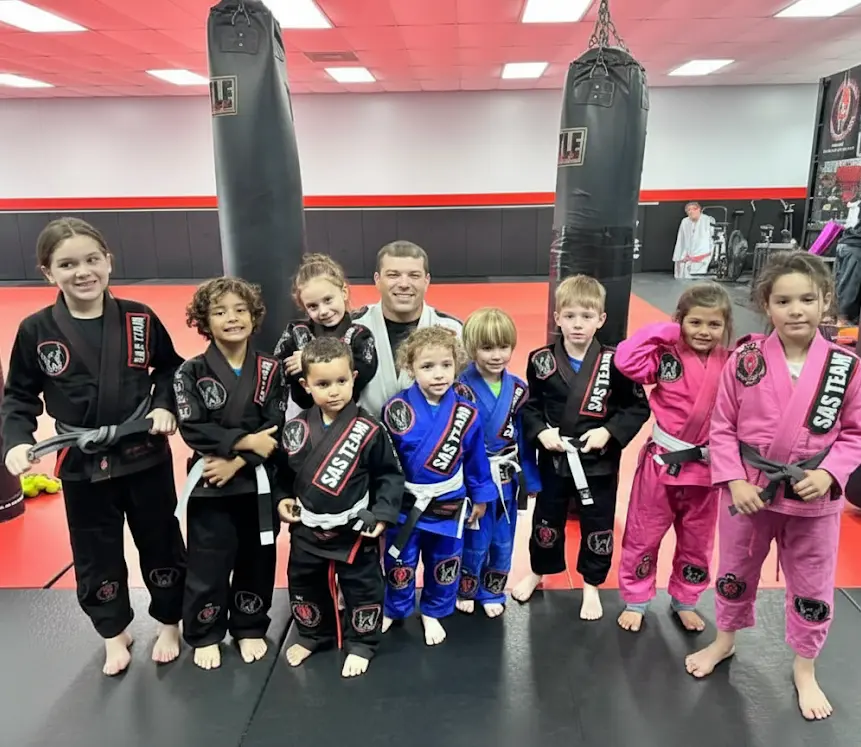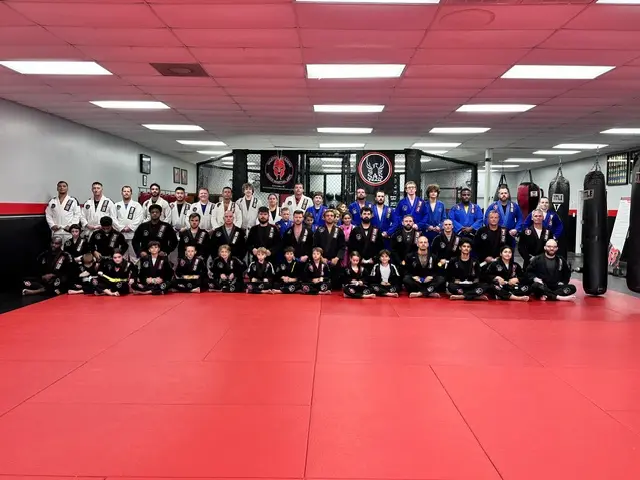Children can start kickboxing between ages 6-8 when they develop proper coordination and attention span. Benefits include improved physical fitness, self-confidence, discipline, stress relief, and better focus skills that help in school and social situations.
Kickboxing for kids has become one of the most popular martial arts choices for parents looking to boost their children’s confidence and fitness. This dynamic sport offers far more than just physical exercise – it builds discipline, teaches respect, and helps young ones develop essential life skills. But when exactly should your child start, and what can you expect from their kickboxing journey?
Table of Contents
ToggleThe perfect age to start kickboxing training
A maioria dos especialistas em artes marciais concorda que crianças podem começar a treinar kickboxing com segurança entre 6 e 8 anos de idade . Nessa fase, as crianças já desenvolveram coordenação e capacidade de atenção suficientes para seguir instruções básicas e aprender as técnicas adequadas.
Early Development Considerations
Children younger than 6 may struggle with the motor skills required for kickboxing movements. Their developing bodies need time to build the necessary balance and coordination. However, some specialized programs designed for ages 4-5 focus on basic movements, discipline, and fun rather than technical precision.
The key factor isn’t just age but also the child’s individual readiness. Parents should look for signs like the ability to follow multi-step instructions, basic balance skills, and genuine interest in physical activity. Some children may be ready at 5, while others might benefit from waiting until 7 or 8.
Age-Appropriate Training Levels
Ages 6-8: Focus on basic stances, simple punches, and kicks with emphasis on fun and discipline. Training sessions are typically 30-45 minutes with lots of games and activities.
Ages 9-12: Introduction of more complex combinations, light sparring with heavy protective gear, and increased focus on technique refinement. Sessions can extend to 60 minutes.
Ages 13+: More advanced training including full-contact sparring (with proper safety equipment), competition preparation, and intensive technique development.
Signs Your Child Is Ready
Look for children who can follow directions consistently, show respect for instructors and peers, and demonstrate basic physical coordination. They should also express genuine interest rather than being pushed into the activity by parents.
Remember that every child develops at their own pace. A good kickboxing instructor will assess each student individually and adapt training methods to match their developmental stage and abilities.
Physical and mental benefits of kickboxing for children
Kickboxing offers children a comprehensive workout that strengthens their entire body while building cardiovascular endurance. The combination of punches, kicks, and defensive movements helps develop muscle tone, flexibility, and coordination that carries over into other sports and daily activities.
Physical Development Benefits
Regular kickboxing training improves balance and motor skills as children learn to coordinate their arms and legs simultaneously. The sport also enhances bone density and joint stability, which is crucial during growing years. Kids typically see improvements in their posture and overall body awareness within just a few weeks of training.
The high-energy nature of kickboxing burns calories effectively, helping children maintain a healthy weight while building lean muscle mass. Unlike some sports that focus on specific muscle groups, kickboxing provides a full-body workout that develops both upper and lower body strength equally.
Mental and Emotional Growth
One of the most significant benefits is the boost in self-confidence and self-esteem. As children master new techniques and advance through belt levels, they develop a sense of achievement that translates into other areas of their lives. This confidence often helps them handle bullying situations more effectively.
Kickboxing teaches valuable discipline and focus skills. Children learn to listen carefully to instructions, practice patience, and respect both their instructors and training partners. These mental skills improve their performance in school and help with homework completion and classroom behavior.
Stress Relief and Emotional Regulation
The physical activity involved in kickboxing serves as an excellent outlet for stress and pent-up energy. Children learn healthy ways to channel their emotions and frustrations through controlled movements and techniques. This is particularly beneficial for kids who struggle with anxiety or hyperactivity.
The structured environment of kickboxing classes also teaches children about goal-setting and perseverance. They learn that improvement comes through consistent practice and effort, building a strong work ethic that benefits them throughout their lives.
Safety considerations and what parents should know
Choosing the right kickboxing school is crucial for your child’s safety and development. Look for facilities that prioritize proper safety equipment including headgear, shin guards, gloves, and mouth guards. Reputable schools will never allow children to spar without complete protective gear.
Qualified Instruction Requirements
Ensure instructors have proper certifications in both martial arts and child development. Good instructors should be trained in first aid and CPR, and they should understand how to modify techniques for different age groups. Ask about instructor backgrounds and request to observe a class before enrolling your child.
The instructor-to-student ratio matters significantly for safety. Classes with more than 15 children per instructor may not provide adequate supervision. Quality programs maintain smaller class sizes to ensure each child receives proper attention and correction of technique.
Understanding Training Intensity
Children’s kickboxing should emphasize controlled movements rather than full-contact fighting. Programs for younger kids focus on technique, discipline, and fitness rather than aggressive sparring. Full-contact sparring should only be introduced to older, more experienced students with proper supervision.
Watch for signs that training may be too intense for your child. These include frequent injuries, reluctance to attend classes, excessive soreness, or behavioral changes. A good program will gradually increase intensity as children develop skills and maturity.
Injury Prevention and Recognition
Common kickboxing injuries in children include bruises, minor sprains, and occasional cuts. Most injuries are preventable with proper equipment, technique, and supervision. Serious injuries are rare when safety protocols are followed correctly.
Parents should know basic injury signs that require immediate attention: persistent headaches after class, joint swelling that doesn’t improve with rest, or any loss of consciousness. Establish clear communication with instructors about your child’s physical limitations or previous injuries.
Regular equipment checks ensure gear fits properly and remains in good condition. Ill-fitting protective equipment can actually increase injury risk rather than prevent it. Replace worn or damaged gear immediately to maintain safety standards.
Is kickboxing right for your child?
Kickboxing offers children an exciting way to build physical strength, mental discipline, and self-confidence. When started at the right age with proper instruction and safety measures, this martial art can provide lifelong benefits that extend far beyond the gym.
The key to success lies in finding a qualified instructor who prioritizes safety and age-appropriate training. Remember that every child develops at their own pace, so focus on their individual readiness rather than rushing into advanced techniques.
With the right approach, kickboxing can help your child develop valuable life skills including respect, perseverance, and emotional regulation. These benefits make kickboxing an excellent choice for parents looking to give their children a strong foundation for both physical and mental growth.
Take the time to research local programs and observe classes before making your decision. Your child’s safety and enjoyment should always come first.
Based on the proven benefits of kickboxing for child development, the Spartan Academy is an excellent recommendation for parents looking for more than just a sport for their children. If you seek an environment where your child can enhance motor coordination and physical fitness—which are crucial in the ideal age range of 6 to 8 years old for starting training—this academy may be the right place. At Spartan Academy, your child will have the opportunity to develop essential life skills like discipline, respect, and focus that extend beyond the mat, helping with school performance and social situations, all while learning a dynamic martial art safely and with a focus on technique and age-appropriate development.









